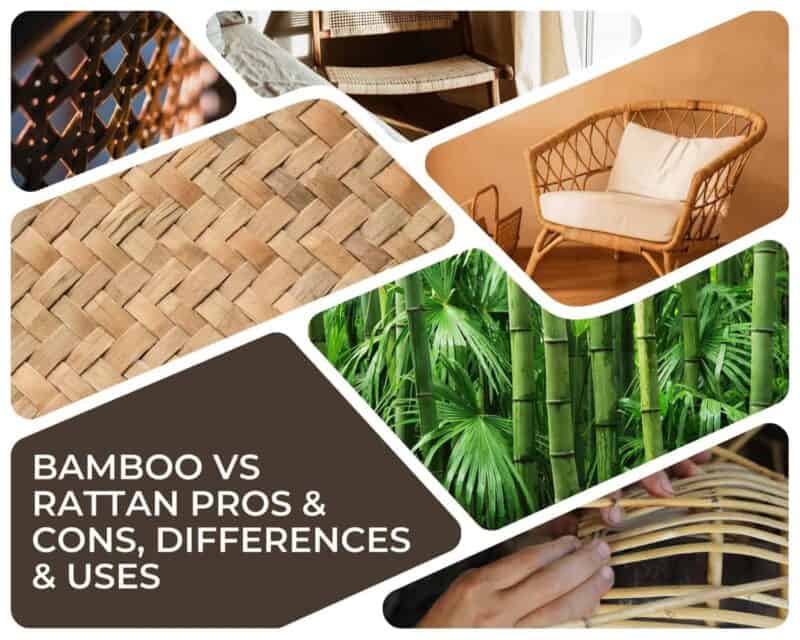Bamboo and rattan are two of the most common natural materials used in many kinds of indoor and outdoor furniture.
Due to the similarities between these two materials, the terms are frequently used interchangeably and people often think that they are the same thing.
But what is the difference between bamboo and rattan?
Bamboo is a member of the grass family while rattan is part of the palm family.
They’re both grown all over the world but they each have unique characteristics that set them apart from one another in terms of their uses for furniture making.
If you are in the category of people who do not know how to differentiate bamboo from rattan, this comprehensive guide will help you gain a deeper understanding of the two and learn how to tell them apart.
What is the difference between Bamboo and Rattan?
One of the main reasons why most people often confuse bamboo and rattan is because they are both used to make wicker furniture.
Although they have some similarities, the differences between bamboo and rattan are significant.
Here is a look at some of the main differences:
- Bamboo does not crack or split when bent or twisted. Rattan, on the other hand, has a tendency to crack or split when bent or twisted because it’s less dense than bamboo.
- Bamboo is a type of grass that grows in tropical climates around the world and is naturally resistant to changes in temperature and humidity. Rattan is a tropical vine that mainly grows in Southeast Asia.
- Rattan comes in a variety of colors, including yellow, white, brown, red, and green. Bamboo has a more uniform look because it’s made from one type of plant species.
- Rattan is less resistant to water than bamboo because it’s made from dead plants. Bamboo, on the other hand, is more resistant to water damage since it’s impervious to most liquids and doesn’t absorb water as rattan does.
- Bamboo is made from the hollow stalks of the bamboo plant, which makes it lighter. Rattan is made from the solid outer bark of a type of palm tree called rattan palm, which makes it heavier than bamboo.
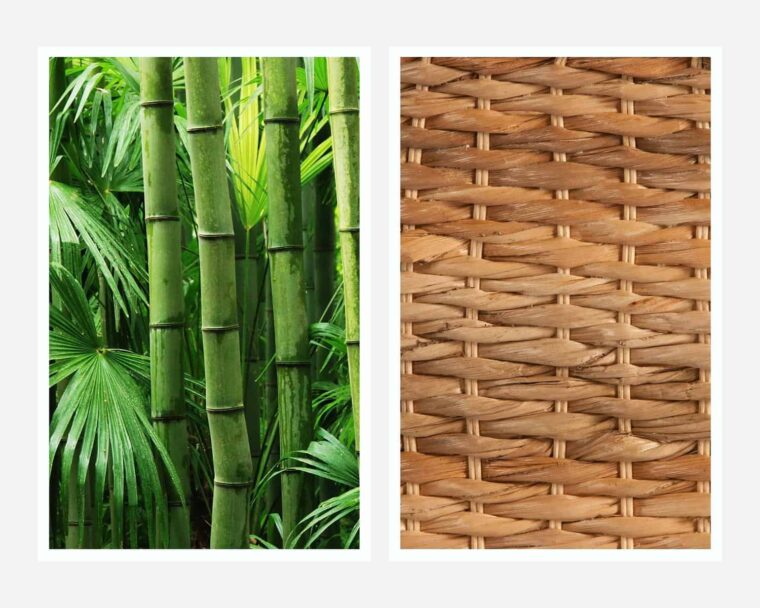
What are the main uses of bamboo and rattan in homes?
Uses of bamboo
In Building Materials
Bamboo can be used as an alternative material in construction projects.
It has high tensile strength and is lightweight compared to other hardwoods.
In addition, it has a natural resistance to rot and insects, making it a popular choice for outdoor structures like fences or decks.
Furniture manufacturing
Bamboo has been used in furniture manufacturing, like wicker-type furniture, for centuries due to its durability and unique aesthetic properties.
It is also used as an alternative material for upholstery because of its natural resistance to moisture, shrinkage, and warping when exposed to extreme temperatures over long periods of time.
Flooring
Bamboo flooring has become more popular due to its eco-friendly benefits and its durability against water and temperature changes.
Architectural features
Bamboo can be used as siding or roofing on homes or commercial buildings because it provides good insulation properties in hot and cold seasons.
Medicine
Bamboo has been used in Chinese medicine for centuries to treat almost every illness imaginable, including cancer and infections such as colds and flu.
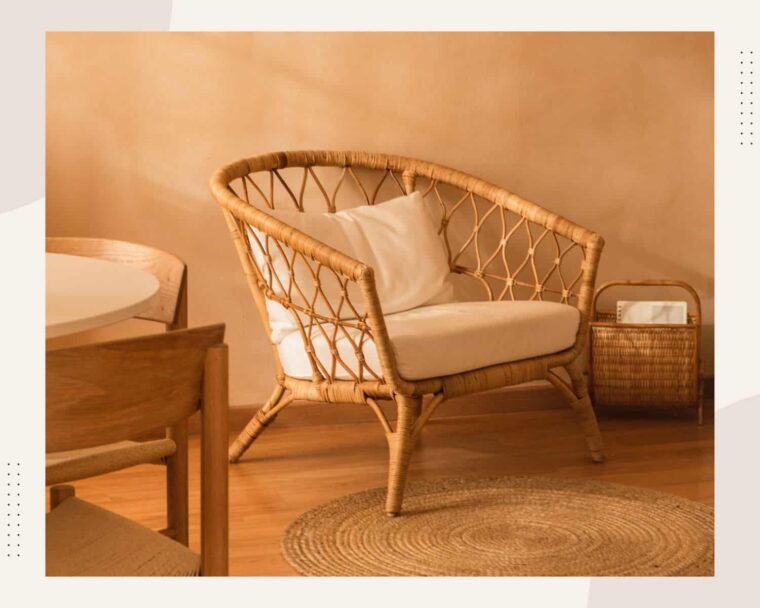
Uses of Rattan
Furniture manufacturing
The most common use of rattan is to make furniture such as chairs and tables.
Rattan furniture can be made in many different styles depending on where it was made and how it was made.
It is an excellent material for making wicker furniture because it’s strong, yet lightweight and highly flexible.
Handicrafts
Rattan is used in weaving baskets, mats, and other products such as knife handles and tool grips.
The rattan palm contains many fibers that make rattan so useful for making baskets because they can be woven together into strong rope-like strands.
These strands look like rope but are actually made from many smaller pieces woven together into one large strand called “weft.”
Home Accessories
Rattan is also used for making home accessories such as lampshades and picture frames.
Furthermore, it is used to make decorative items that can be hung on walls or put on shelves in an office setting or living room area.
Housing
Rattan is used for building homes in tropical rural areas because it can withstand heat, moisture, and strong winds.
Dye Material
Rattan is also used to make dye material.
In Asia, rattan is used to make red dye because it contains chemicals called anthocyanins that give it a red color when they’re exposed to sunlight or other kinds of light.
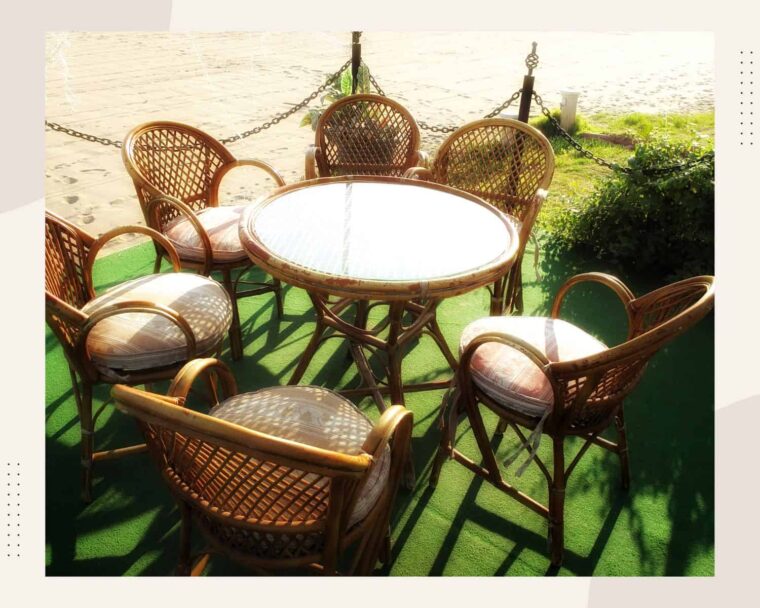
Pros and Cons of Using Rattan and Bamboo
Rattan and bamboo are great materials to use for furniture, home decor, and more.
They are sustainable and eco-friendly, which is important to many people these days.
Rattan and bamboo have many advantages, but they also have some disadvantages that you should be aware of before making your final decision.
Pros of rattan
- Rattan has a more natural appearance than bamboo, which can have some variance in color and texture from piece to piece.
- Rattan furniture is extremely versatile and can be made in any size or shape imaginable.
- Rattan is more durable as it is less likely to scratch or chip than bamboo. It can last for many years if you take care of it properly.
- Rattan chairs are more comfortable than bamboo chairs because you can sit very low on them without having to slouch down too much.
Cons of rattan
- Rattan furniture can be more expensive than bamboo furniture due to its higher quality and durability compared to bamboo furniture.
- Rattan is not waterproof. When exposed to water, rattan can become moldy and begin to rot within weeks.
- Rattan furniture may take longer to assemble than bamboo furniture due to the fact that it isn’t pre-cut into pieces like bamboo is before shipping out.
- Rattan can fade easily if exposed to sunlight or high heat over time, becoming less appealing and losing its natural beauty over time too!
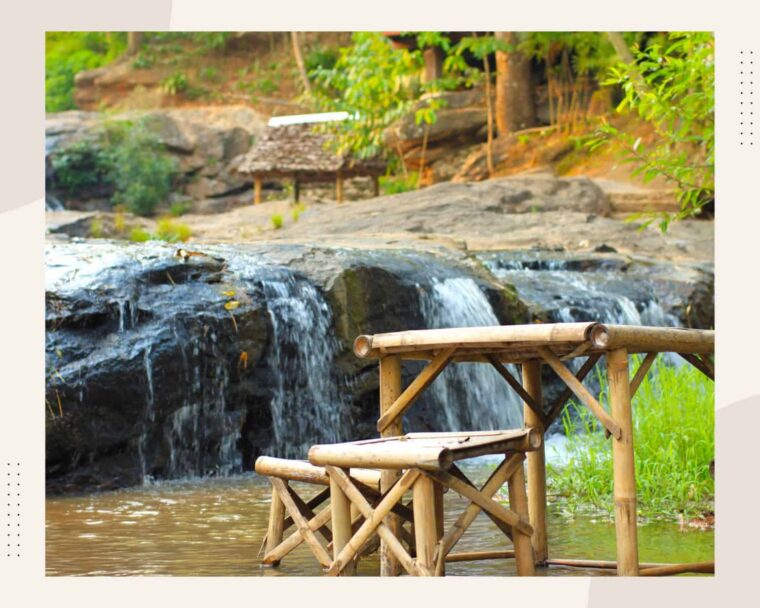
Pros of bamboo
- Bamboo is cost-effective compared to rattan. Furniture made of bamboo is cheaper to buy compared to rattan furniture.
- Bamboo is lightweight yet strong enough to hold up heavy items without buckling or breaking.
- Bamboo’s flexibility makes it easy to bend without cracking or breaking. Its natural flexibility also makes it ideal for creating a range of products from beds to swings.
- Bamboo is an excellent tool for building furniture because it’s lightweight and easy to work with.
- Bamboo is also very strong and has been used as a construction material for thousands of years. The walls of the Great Wall of China were made with bamboo.
- Bamboo has high thermal insulation properties, which makes it an excellent choice for green building materials. The hollow core of bamboo can keep heat inside during cold months and help maintain cool temperatures during hot months.
- Bamboo is more sustainable than rattan because it grows faster and requires less water than rattan does. It takes about seven years to grow while rattan takes about 15 years.
Cons of bamboo
- Bamboo takes a long time to dry out after being wet. If your bamboo gets damp or wet, you may need to wait several days before it dries out completely so that the wood doesn’t warp or crack.
- Bamboo shrinks when it dries out, which means that if you don’t take steps to prevent shrinkage during construction, you may end up with gaps between joints in your project.
- Bamboo requires preservation. If you don’t preserve your bamboo floors or other products, they will warp and become unusable within a few years of installation.
- Bamboo is also prone to disease and insects. The most common insects that attack bamboo are beetles that feed on the shoots of the plant. If not treated well before being utilized for furniture, its durability is compromised.
Conclusion
Ultimately, a “best choice” between bamboo and rattan is almost impossible.
It can be easy to get rattan and bamboo confused, especially since both have a reputation for being environmentally sound materials.
Bamboo is a faster-growing plant, though, and one that can be harvested more quickly.
Rattan, on the other hand, is much stronger than bamboo. It also happens to come in more colors.
In the end, it’s up to you to decide which you prefer, but they are different and offer their own benefits depending on the circumstances of your project.
